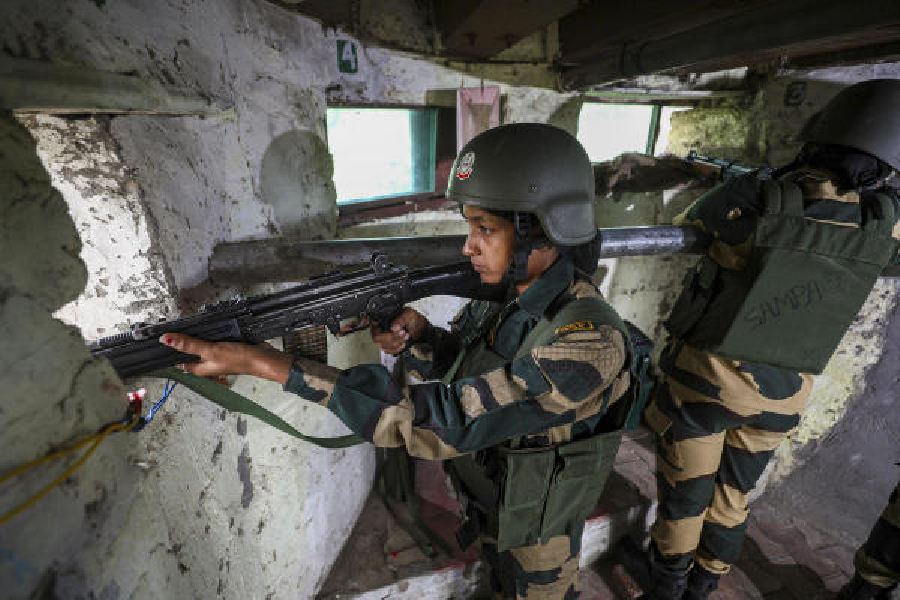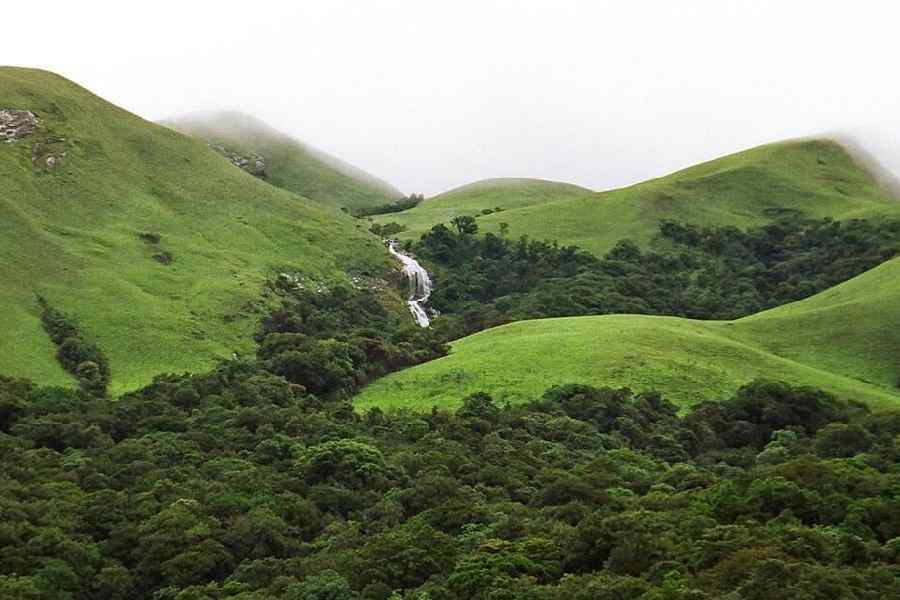 |
| A house submerged in the recent Garo hills floods. File picture |
Shillong, Oct. 7: Floodwaters in the plains belt of Garo hills in western Meghalaya have gradually receded but not without leaving a devastating impact on agriculture, the mainstay of the inhabitants of the area.
Around 21,000 households were affected but only half of these were severely impacted.
“The floodwaters have started receding and the overall situation was improving,” West Garo Hills deputy commissioner Pravin Bakshi said. No loss of life has been reported so far.
A sudden backflow from the Brahmaputra flooded Jingiram, one of the major rivers in the Garo hills, leading to the inundation.
Around 100 villages were affected, with the official count of displaced people being nearly 91,000.
Some of the affected villages were Sapalgiri, Bandhabok, Rajabala, Garodubi, Magurmari, Phershakandi, Bhotdoba, Namabilla, Haripur, Nalbari, Nayagaon, Old Morasuti, New Bhaitbari, Sidakandi, Bharalgaon, Ambari, Patranga, Kalagaon, Sakmal and Nekikona.
The area had reeled under floods just two months ago, with 114 villages fully or partially inundated and more than one lakh people affected.
Bakshi said most of the flood victims, who were accommodated in the 14 relief camps, had left for their homes. “Though the situation is slowly limping back to normal, severe damage has been done to agriculture.”
At the same time, he said during the recent New Delhi visit by Meghalaya water resources minister A.L. Hek, Union water resources minister Pawan Kumar Bansal asked for a detailed project report on the flood protection and anti-erosion work that needed to be undertaken in the state.
Last week, Hek had apprised Bansal about the flood situation in Garo hills. Bansal had assured Hek of all possible support from the Centre to tackle floods in the state.
Health authorities in Garo hills have also been put on alert to take precautionary measures to prevent the outbreak of an epidemic. “Water-borne diseases might spread in the flood-hit areas once the water level starts receding,” a West Garo Hills administration official said.
Diseases like diarrhoea, cholera and gastroenteritis can take centre stage if precautions are not taken.
Officials from the public health engineering department have distributed chlorine tablets and bleaching powder in the flood-affected areas to prevent the outbreak of diseases.










